'Important' Iron Age settlement found at Warboys dig
- Published
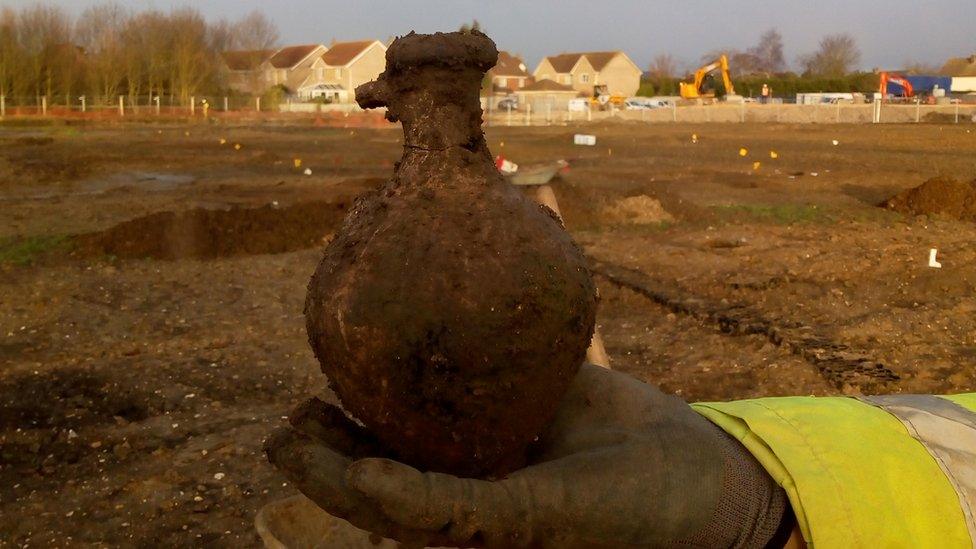
Roman finds include this jug and human remains, including six skeletons
Iron Age roundhouses, Roman burials and Saxon pottery have been discovered in a "hugely important and hitherto unknown settlement".
The seven month-long dig in Warboys in Cambridgeshire also uncovered "a rare example" of "early Saxon occupation mingled with the latest Roman remains".
Archaeologist Stephen Macaulay said: "We almost never find actual physical evidence of this."
The settlement reverted to agricultural use after the 7th Century.
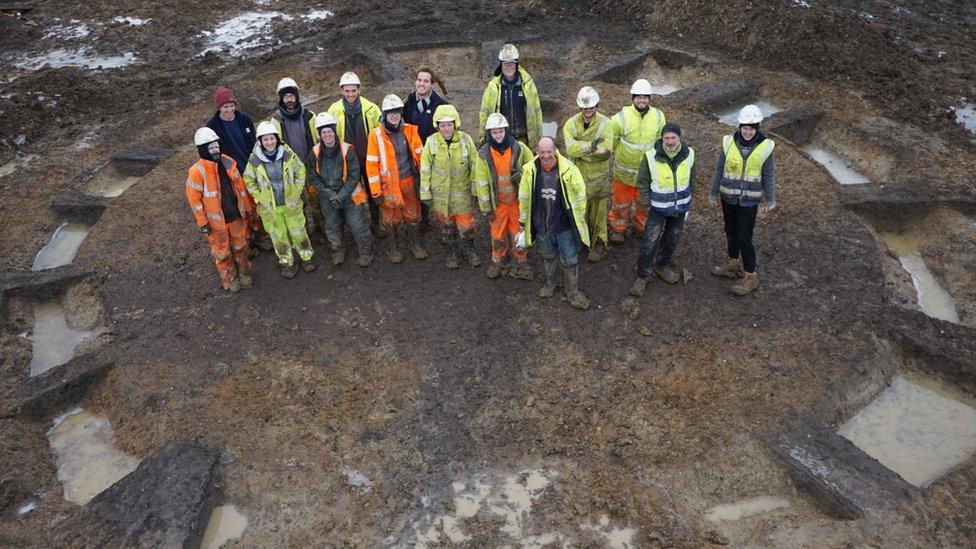
The earliest finds date to the middle to late Iron Age - including several round houses

And three crouched human burials
"What makes this site really significant is we have evidence of early Saxon occupation mingled with the latest Roman remains," said Mr Macaulay, deputy regional manager for Oxford Archaeology East.
Saxon pottery, beads, worked antler and metalworking residues were uncovered.
He added: "This a rare example of the Roman to Saxon transition in the east of England."
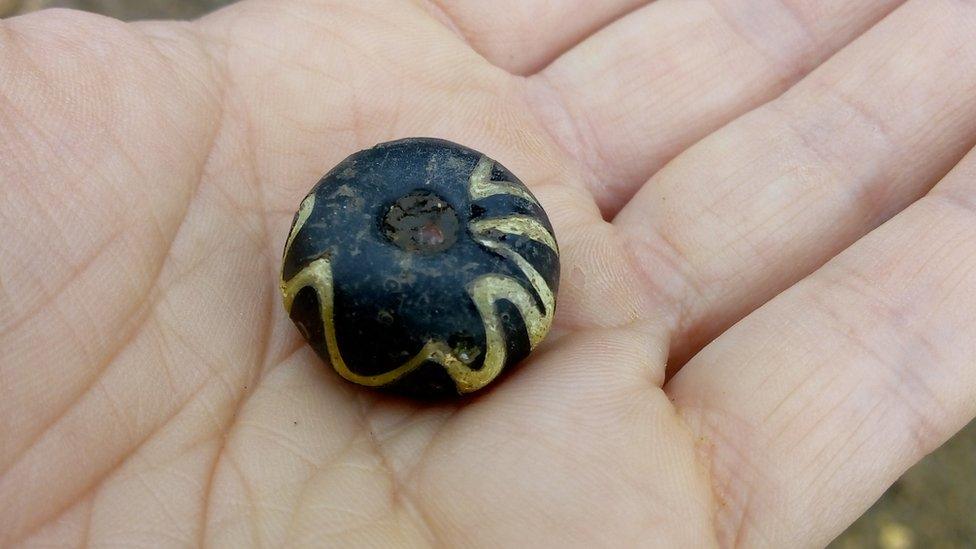
A later Roman or early Saxon child was found buried with a bead necklace and bone-carved hairpin in the shape of an axe
The earliest finds include eight roundhouses, some of which date back to about 100BC, three crouched human burials and 2,500-year-old pottery remains.
The 10-acre (four-hectare) site provided evidence of Roman rural industry, including a 15ft (4.6m) corn dryer and kilns.
Archaeologists uncovered human cremations and six burials.
They also "seem to have stumbled upon a shrine" and discovered cattle skulls and a largely intact horse skeleton, which they believe could be votive offerings.
You may also be interested in:
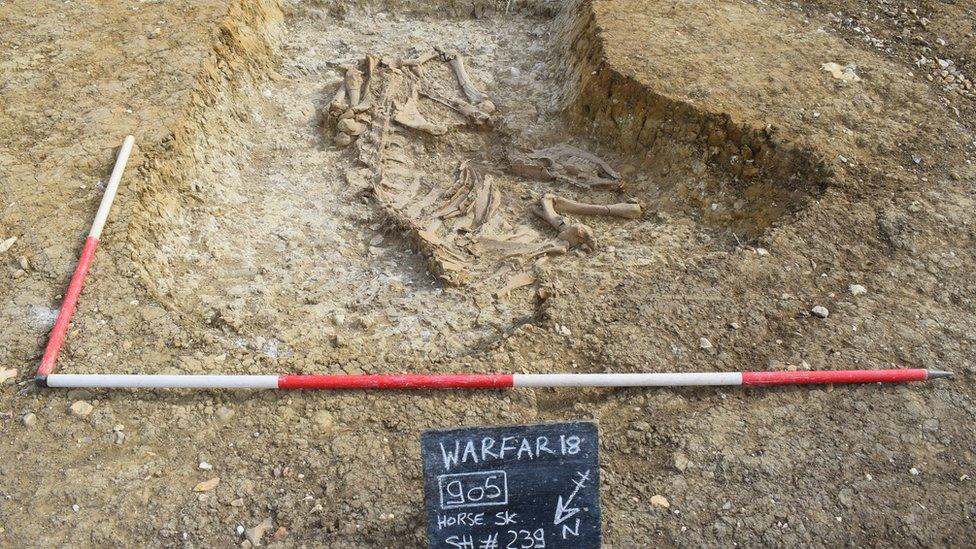
Archaeologists believe the Romans deliberately buried this horse as an offering to the gods
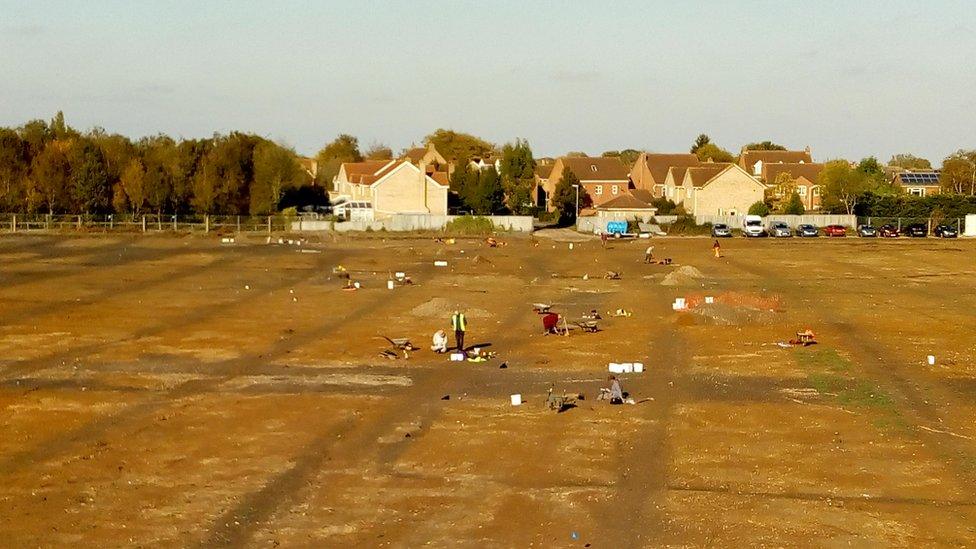
The experts were helped by volunteers from the Warboys Archaeology Group
The site was excavated ahead of a housing development by Bellway Homes.
Initial evaluation in May last year revealed extensive Roman remains, but the Iron Age settlement was not revealed until the main excavation began later that year.
Mr Macauley said the dig has uncovered "a hugely important and a hitherto unknown settlement".
- Published22 June 2019
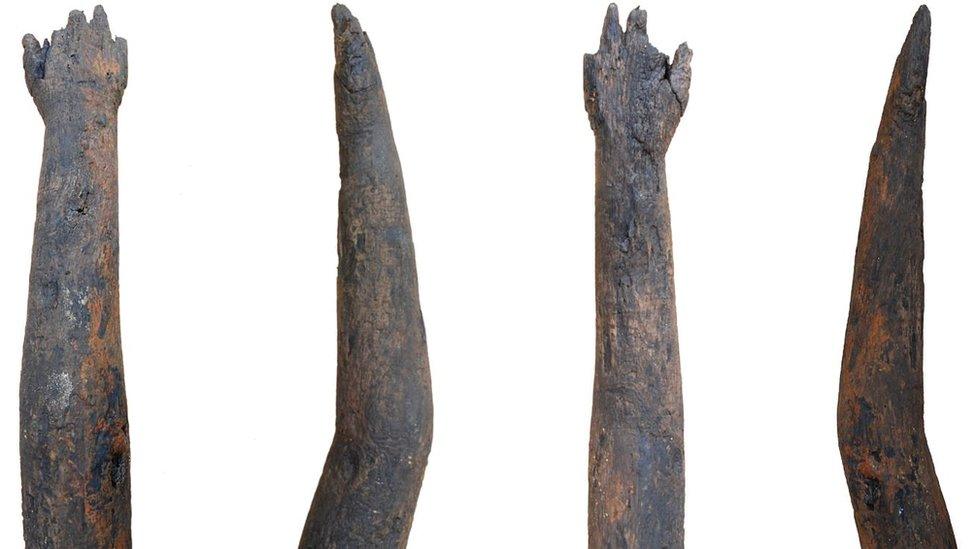
- Published18 May 2019
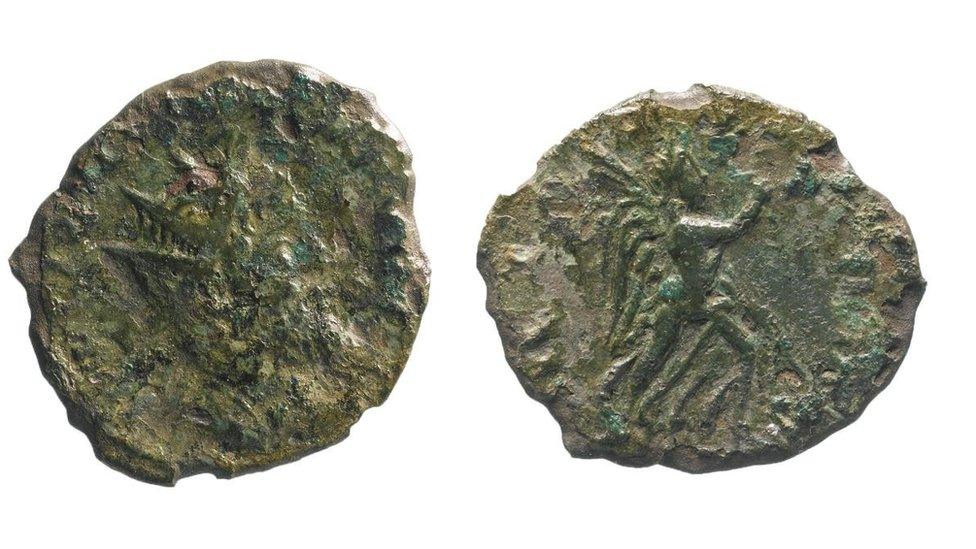
- Published31 January 2019

- Published4 October 2018
